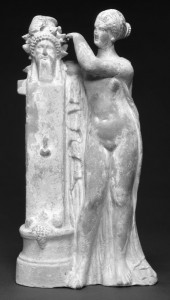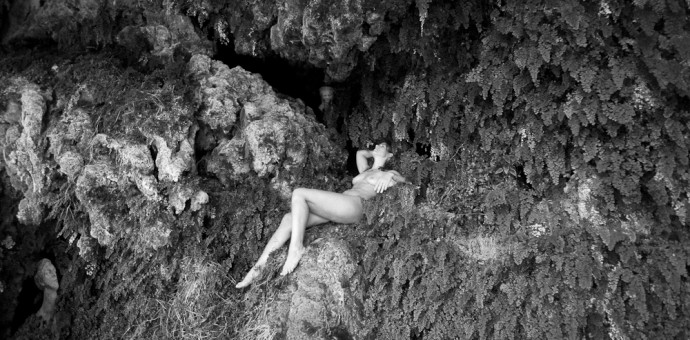Herm
In the ancient world, given that fertility was of fundamental importance, sex and religion were entwined. Bacchanalian rites were famous for their eroticism. A Roman home would often have the figure of Priapus holding his oversized phallus prominently displayed by the entrance and the garden would have a Herm.

Aphrodite and Herm
The Herm was Hermes, the winged messenger, one of the oldest of the Gods and father of Pan. His statue stood at crossroads, marked boundaries, was incorporated into buildings and beautified gardens. The head and shoulders of Hermes surmounted a simple four sided pillar at the front of which were his genitals, usually erect.
In ancient Greece the Herm was taken extremely seriously and when the Herms of Athens were vandalised the suspected perpetrator was sentenced to death in absentia. Abhorred by the Christians, Herms were extirpated and only made a return to garden architecture during the Renaissance – though now denuded of their phalli – sex and religion never more to join forces.
The Herm at bottom left in this picture is actually a terracotta portrait bust of me, Patrick Nicholas, by my friend Guy Lydster from 1999.
Location: Vulci

